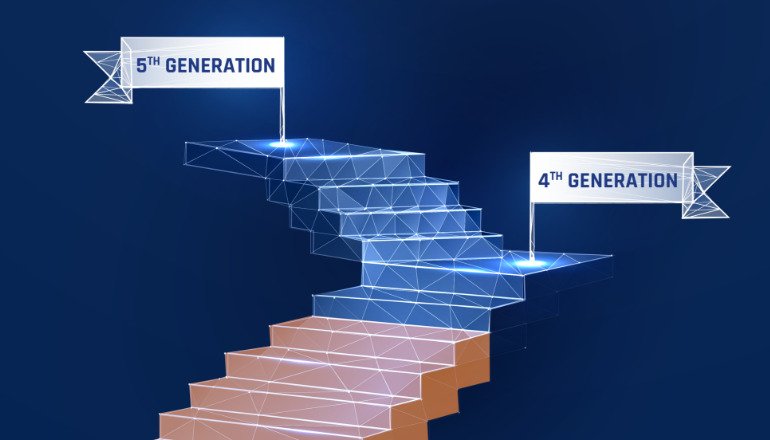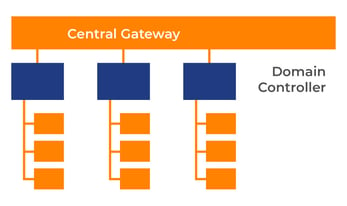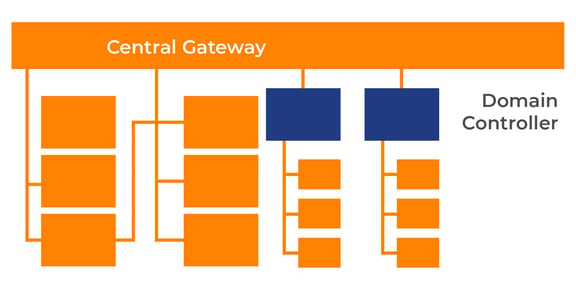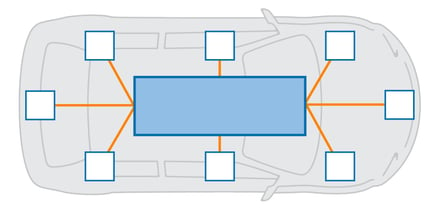Revving-Up: The Automotive Industry is Preparing for 4th and 5th Generation E/E Architecture
May 9, 2023
The existing E/E Architecture that relies on a separate ECU for each new functionality is becoming obsolete. The cars of the future need a much more robust system that can support highly complex functions. These 4th and 5th Generation E/E Architectures incorporating a centralized approach are starting to hit the market. 4th Generation - or Domain-Centralized Architecture is already being used in some Honda, Volkswagen, and Mercedes models, among others. But it’s the 5th Generation - Vehicle Centralized Zonal Architecture - that will finally allow Software-Defined Vehicles (SDV) to reach their full potential.
4th Generation: Domain-Centralized Architecture
Earlier generations of E/E Architecture offer limited communication and collaboration between domains and a need for a large number of ECUs. 4th Generation E/E Architecture is the first to make the switch to a simplified structure in which there is a central domain controller per domain.
This change provides the vehicle with the ability to handle more complex functions such as Level 3 autonomous driving. It also further consolidates functions beyond the abilities offered by the central gateways available in 3rd generation architectures, leading to fewer ECUs and therefore cost savings.
Within domain-centralized architecture, there are two main archetypes: full domain centralization and selected domain centralization.
Full Domain Centralization
In this archetype, all of the automotive domains in the vehicle are using Domain Control Units (DCU) to control the functions in their respective domains. This is well-suited for OEMs that have multiple platforms and will enable Level 3 Autonomous Driving, in which the vehicle can handle most driving tasks on its own under specific conditions, with the driver intervening only when necessary.

Selected Domain Centralization
In this archetype, only some of the domains use DCU architecture. Usually, it is the ADAS and infotainment domains that first make the switch, providing a level of cost minimization for OEMs.
While grouping systems in the vehicle by their function is an important step in cutting down on the wiring and weight required to build a vehicle, it is the next step, to centralized Zonal Architecture that will really make the biggest leap in efficiency and the ability to handle the increasingly complex functionality needed for SDVs and future levels of autonomous driving.

5th Generation: Centralized Zonal Architecture
Unlike Domain Architecture, in which vehicle systems are grouped by function, Zonal Architecture groups ECUs, sensors, and other devices by their location in the vehicle. This means that one zonal gateway handles all of the devices in a particular section of the car, regardless of what domain they belong to. (I.e. their function.) Using virtual domains and an Ethernet TSN backbone, this type of architecture sets vehicles up perfectly for the highly complex and high-compute functions that will be required by levels 4 and 5 of autonomous driving.
Centralized architecture also has two archetypes:
- Central Brain
- Zone Computing
Central Brain
In this set-up, there is one powerful central general purpose processing unit with mostly unprocessed inputs from ECUs, sensors, etc. So far, only one OEM is using this archetype, which is optimized for cameras and a deep-learning-based approach to highly autonomous driving.

Zone Computing
With zone computing, most domains are controlled by central virtual domain units based on a general purpose compute cluster and backed by distributed zone computers across the vehicle. Starting to be used by a small number of OEMs, zone computing is best for those with a limited number of platforms or variants.

Benefits of Zonal Architecture
OEMs are in the process of transitioning from 4th to 5th Gen. Once that transition is complete, automotive manufacturers will enjoy several benefits afforded by Zonal Architecture, including:
- A smoother production process - Zonal Gateways or HPCs consolidate information and communication from ECUs, sensors, and other devices in a geographic ‘area’ of the vehicle, requiring a smaller wiring harness and fewer cables connecting multiple ECUs.
- Reduced manufacturing costs - when functionalities are consolidated into fewer chips, the need for multiple individually sourced chips and silicon is eliminated. This will reduce the manufacturing costs to 14% of total E/E cost (a 7% reduction).
- Improved redundancy - the sharing of resources across zones will eliminate duplications while also maintaining necessary contingencies. An error in one zone will not result in the entire system shutting down.
- Unified updates - fewer ECU variants make it much easier to deploy OTA updates securely, addressing the need for E2E solutions.
- New revenue streams - subscription and customer loyalty plans will provide OEMs with new vehicle lifetime monetization.
- Decoupling of hardware and software - software development efforts are significantly reduced through consolidated ECUs and DCUs as well as a greater ability to reuse code.
Giving SDVs What They Need To Succeed
For SDVs to reach their full potential, they need the right E/E architecture in place. One that will provide software developers and architects with the flexibility to quickly and efficiently create automotive applications and update existing ones across all vehicle domains.
The centralized domain in 4th Generation E/E Architecture is a step in the right direction, decreasing costs and increasing communication among the vehicle domains. But it is the leap to fully centralized zonal systems that we will soon see in 5th Generation E/E Architecture that will create many more opportunities for OEMs to produce fully-equipped SDVs.
For more information about how GuardKnox’s CommEngine™ and SOA Framework can enable the move to 5th generation zonal architecture, contact us to set up a demo.





